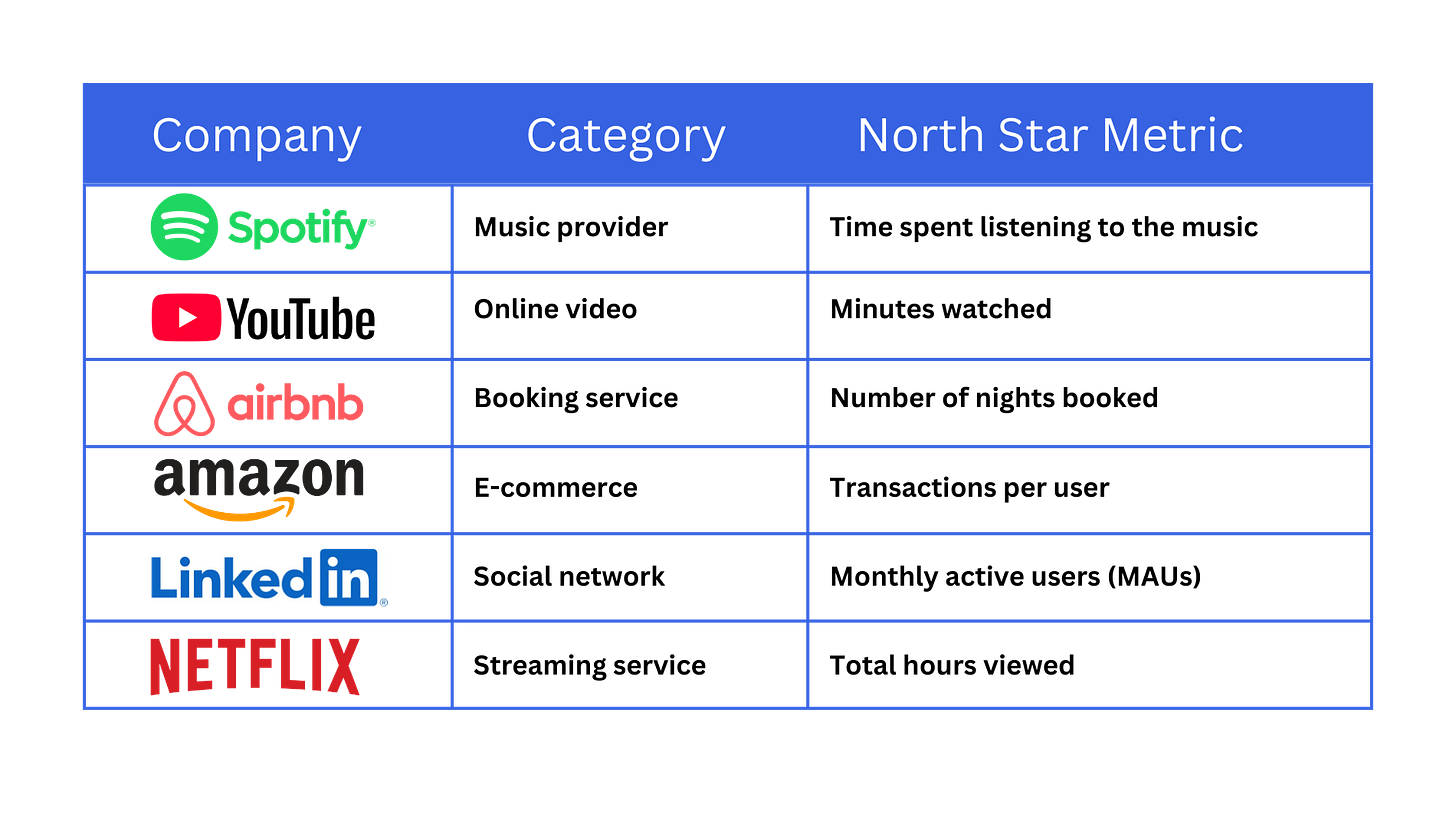What is a North Star Metric And How to Identify It
A week ago, I attended a webinar on the use of artificial intelligence. As the webinar was coming to an end, it was time for questions, and I repeatedly heard inquiries asking about the North Star or the North Star Metric for various AI companies.
Understanding and clearly defining the North Star Metric is important for product managers, and today I want to explain why.
Before diving into the specifics, let’s talk about metrics in general. Metrics are indicators that help track the effectiveness of different aspects of a product, such as its functionality, business results, or user engagement.
Metrics are typically focused on specific goals or issues that need to be measured. For instance, in SaaS products, Monthly Recurring Revenue (MRR) is used to determine the stable income a company receives monthly from subscriptions.
Another critical example is Daily Active Users (DAU). This metric provides insight into user activity within a product per day and is essential for gauging user engagement. DAU is often paired with Monthly Active Users (MAU) to provide a more comprehensive view.
If you’d like to delve deeper into product metrics, I’ve written a separate article that explores them in detail.
Now, back to the North Star Metric (NSM). The term ‘North Star’ likely originates from the star that sailors used in ancient times to navigate their ships across the sea.
In the business world, the term represents the most crucial metric for a company. The NSM serves as a guiding star, pointing the direction for a company’s development and defining its strategic focus.
What Makes the NSM Special
The NSM is a single key metric that reflects the long-term value a company delivers to its customers. It aligns all teams across the company towards a shared goal, ensuring everyone’s efforts contribute to the same overarching objective.
To illustrate this, let’s look at the NSM of a well-known company, Airbnb. For Airbnb, the NSM is the number of nights booked. Why is this metric significant?
For guests, the core value Airbnb provides is the ability to find suitable accommodations for their stays. For hosts, it’s the chance to rent out their properties and earn income. The number of nights booked is a direct measure of how well Airbnb fulfills these needs.
Moreover, this metric impacts Airbnb’s revenue model, as the company earns a commission for each successful booking. Thus, the NSM of number of nights booked helps Airbnb stay focused on its core mission: connecting travelers with unique accommodations.
Examples of North Star Metrics from Various Companies
Here are several examples of NSMs from prominent companies. While no metric is perfect, these examples clearly represent the long-term value these companies aim to provide to their users:
Spotify: Time spent listening
YouTube: Minutes watched
Airbnb: Number of nights booked
Amazon: Transactions per user
LinkedIn: Monthly active users (MAUs)
Facebook: Daily active users (DAUs)
Uber: Rides per week
Netflix: Total hours viewed
How to Identify the North Star Metric for Your Product
Determining your North Star Metric requires identifying what’s truly essential to your business. Every business is a complex entity, and success depends on numerous factors. However, what are the fundamental elements that, like load-bearing structures in architecture, must be intact for the company to thrive?
For many businesses, these fundamental elements include ensuring customer satisfaction, generating profit, and monitoring progress toward these goals.
A metric that only tracks revenue without considering customer satisfaction will not be effective in the long term. Similarly, a company that prioritizes customer happiness but fails to be profitable cannot sustain itself. Finally, a metric that doesn’t allow for insights or behavior adjustments is ineffective.
An ideal NSM should encompass all these factors, tailored to the specific nature of your business. Here’s how you can start identifying your North Star Metric:
What is crucial for the company’s operations? List and prioritize these aspects.
Which key performance indicators (KPIs) and metrics align with the identified items?
Which of these metrics embodies all the elements mentioned above?
Once you’ve answered these questions, arrange your metrics in a hierarchy, placing the NSM at the top.
Instead of a Conclusion
Just like a plant, your North Star Metric needs the right environment to flourish. Companies that choose an NSM require a culture and infrastructure that support it.
Cross-departmental cooperation and a culture that prioritizes the company’s collective goals over individual team interests are essential.
Resistance can arise if employees face significant behavioral shifts or if their compensation structures, such as those in sales teams, create a conflict of interest.
Using North Star Metrics can effectively align teams toward shared objectives, but they need to be flexible.
They should not be adhered to rigidly but should be supported by a culture that adapts to changes and uses analytics to assess their relevance and effectiveness.
Above all, remember that growth and success are the ultimate goals.
This means that your North Star Metric or any focus metric may need to be refined or adjusted as your company evolves or shifts its mission.
Being open to reassessment is essential; no one wants to waste resources pursuing an unproductive path.



